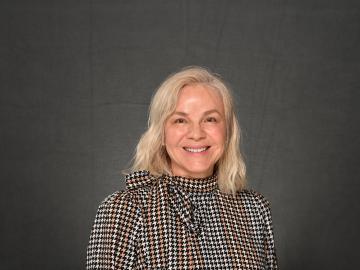
Filter News
Area of Research
- Advanced Manufacturing (7)
- Biological Systems (2)
- Biology and Environment (60)
- Building Technologies (2)
- Clean Energy (123)
- Climate and Environmental Systems (2)
- Computational Engineering (2)
- Computer Science (10)
- Electricity and Smart Grid (1)
- Energy Sciences (1)
- Fuel Cycle Science and Technology (1)
- Fusion and Fission (19)
- Fusion Energy (9)
- Isotope Development and Production (1)
- Isotopes (15)
- Materials (131)
- Materials Characterization (2)
- Materials Under Extremes (1)
- National Security (31)
- Neutron Science (55)
- Nuclear Science and Technology (13)
- Quantum information Science (3)
- Supercomputing (104)
- Transportation Systems (1)
Date
News Topics
- 3-D Printing/Advanced Manufacturing (35)
- Advanced Reactors (10)
- Artificial Intelligence (38)
- Big Data (17)
- Bioenergy (31)
- Biology (29)
- Biomedical (12)
- Biotechnology (7)
- Buildings (14)
- Chemical Sciences (24)
- Clean Water (10)
- Climate Change (31)
- Composites (8)
- Computer Science (58)
- Coronavirus (4)
- Critical Materials (6)
- Cybersecurity (14)
- Decarbonization (30)
- Education (3)
- Emergency (1)
- Energy Storage (29)
- Environment (62)
- Exascale Computing (17)
- Fossil Energy (2)
- Frontier (21)
- Fusion (14)
- Grid (21)
- High-Performance Computing (33)
- Hydropower (3)
- Irradiation (2)
- Isotopes (12)
- Machine Learning (20)
- Materials (59)
- Materials Science (36)
- Mathematics (2)
- Mercury (3)
- Microelectronics (2)
- Microscopy (12)
- Molten Salt (2)
- Nanotechnology (13)
- National Security (21)
- Net Zero (5)
- Neutron Science (50)
- Nuclear Energy (38)
- Partnerships (24)
- Physics (20)
- Polymers (6)
- Quantum Computing (12)
- Quantum Science (19)
- Renewable Energy (2)
- Security (5)
- Simulation (29)
- Software (1)
- Space Exploration (8)
- Summit (18)
- Sustainable Energy (25)
- Transportation (30)
Media Contacts

Hilda Klasky, a research scientist in ORNL’s Computing and Computational Sciences Directorate, has been named a fellow of the American Medical Informatics Association.

Karen White, who works in ORNL’s Neutron Science Directorate, has been honored with a Lifetime Achievement Award.

ORNL is home to the world's fastest exascale supercomputer, Frontier, which was built in part to facilitate energy-efficient and scalable AI-based algorithms and simulations.

ORNL's Climate Change Science Institute and the Georgia Institute of Technology hosted a Southeast Decarbonization Workshop in November that drew scientists and representatives from government, industry, non-profits and other organizations to

Used lithium-ion batteries from cell phones, laptops and a growing number of electric vehicles are piling up, but options for recycling them remain limited mostly to burning or chemically dissolving shredded batteries.

The first climate scientist to head the Department of Energy’s Office of Science, Dr. Asmeret Asefaw Berhe, recently visited two ORNL-led field research facilities in Minnesota and Alaska to witness how these critically important projects are informing our understanding of the future climate and its impact on communities.

Benjamin Manard has been selected to receive the 2023 JAAS Emerging Investigator Lectureship

Caldera Holding, the owner and developer of Missouri’s Pea Ridge iron mine, has entered a nonexclusive research and development licensing agreement with ORNL to apply a membrane solvent extraction technique, or MSX, developed by ORNL researchers to mined ores.

ORNL has joined a global consortium of scientists from federal laboratories, research institutes, academia and industry to address the challenges of building large-scale artificial intelligence systems and advancing trustworthy and reliable AI for

Guided by machine learning, chemists at ORNL designed a record-setting carbonaceous supercapacitor material that stores four times more energy than the best commercial material.


